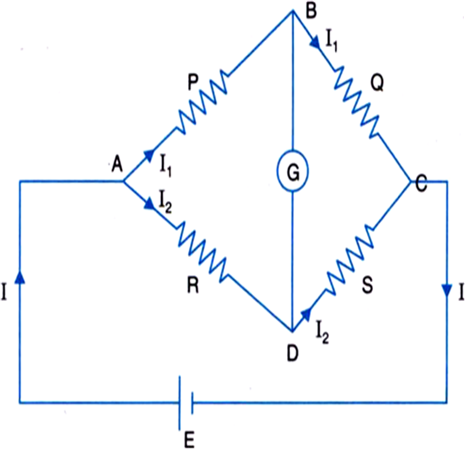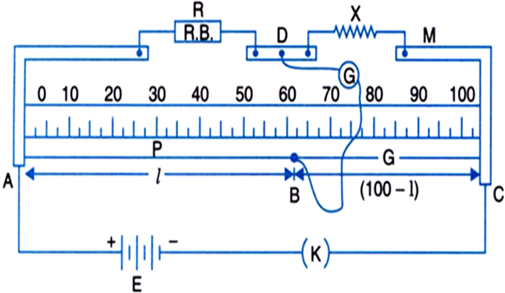
Applying Kirchhoff’s second law for mesh ABCD,
I1P – I2R = 0
or, J1P = I2R ...(i)
For mesh BCDB,
I1Q – I2S = 0
or, I1Q = I2S ...(ii)
Dividing (i) by (ii), we get![]()
This is the balanced condition of the Wheatstone bridge.
Measurement of specific resistance: Slide wire or meter bridge is a practical form of Wheatstone bridge.
In the figure X is unknown resistor and R.B is resistance box. After inserting the key k, jockey is moved on wire AC till galvanometer shows no deflection (point B). If k is the resistance per unit length of wire AC.
P = resistance of AB = kl
Q = resistance of BC = k(100 - l)![]()
![]()
or, ![]()
If r is the radius of wire and l be its length, then its resistivity will be![]()
Precautions: (i) The null point should lie in the middle of the wire.
(ii) The current should not be allowed to flow in the wire for a long time.
